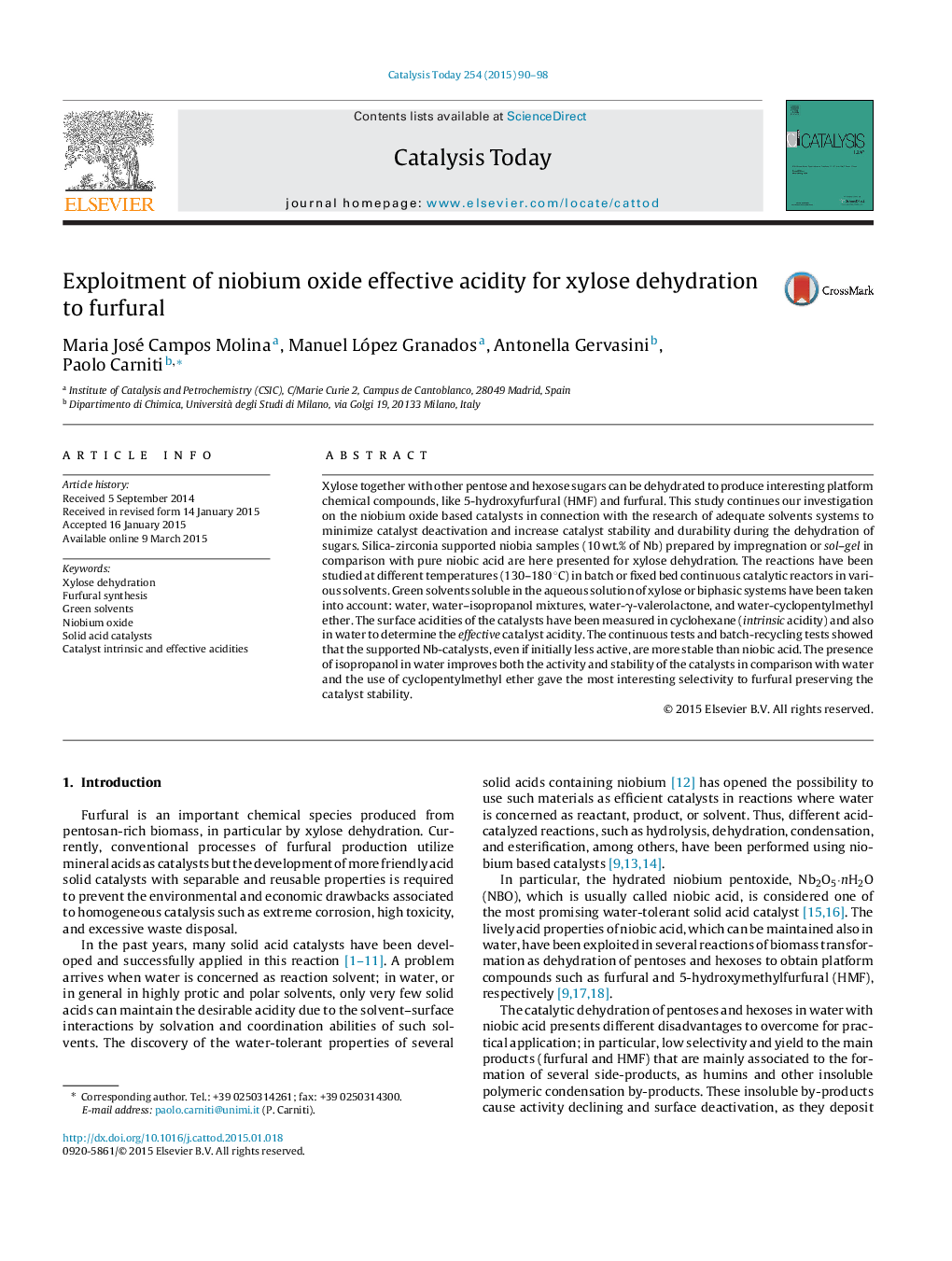| کد مقاله | کد نشریه | سال انتشار | مقاله انگلیسی | نسخه تمام متن |
|---|---|---|---|---|
| 53750 | 46982 | 2015 | 9 صفحه PDF | دانلود رایگان |

• The key role of solid acid catalyst and of reaction solvent for the selective conversion of xylose to furfural is pointed out.
• Intrinsic (in cyclohexane) and effective (in water) acidities of catalysts are determined.
• Dispersed niobia-phases on silica-zirconia support in comparison to bulk niobia were studied.
• Monophasic systems (water, water/isopropanol, water/γ-valerolactone) and biphasic system (water/CPME) are used as reaction solvents.
• Batch and continuous reactors are used for testing activity and stability of the catalysts.
Xylose together with other pentose and hexose sugars can be dehydrated to produce interesting platform chemical compounds, like 5-hydroxyfurfural (HMF) and furfural. This study continues our investigation on the niobium oxide based catalysts in connection with the research of adequate solvents systems to minimize catalyst deactivation and increase catalyst stability and durability during the dehydration of sugars. Silica-zirconia supported niobia samples (10 wt.% of Nb) prepared by impregnation or sol–gel in comparison with pure niobic acid are here presented for xylose dehydration. The reactions have been studied at different temperatures (130–180 °C) in batch or fixed bed continuous catalytic reactors in various solvents. Green solvents soluble in the aqueous solution of xylose or biphasic systems have been taken into account: water, water–isopropanol mixtures, water-γ-valerolactone, and water-cyclopentylmethyl ether. The surface acidities of the catalysts have been measured in cyclohexane (intrinsic acidity) and also in water to determine the effective catalyst acidity. The continuous tests and batch-recycling tests showed that the supported Nb-catalysts, even if initially less active, are more stable than niobic acid. The presence of isopropanol in water improves both the activity and stability of the catalysts in comparison with water and the use of cyclopentylmethyl ether gave the most interesting selectivity to furfural preserving the catalyst stability.
The key role of solid acid catalyst and of reaction solvent for the selective conversion of xylose to furfural is pointed out. Dispersed niobia-phases on silica-zirconia oxide support in comparison to bulk niobia have been studied. Monophasic systems (water, water/isopropanol, water/γ-valerolactone) and biphasic system (water/CPME) have been selected as reaction solvents with the aim of maintaining catalyst stability for long time.Figure optionsDownload high-quality image (189 K)Download as PowerPoint slide
Journal: Catalysis Today - Volume 254, 1 October 2015, Pages 90–98